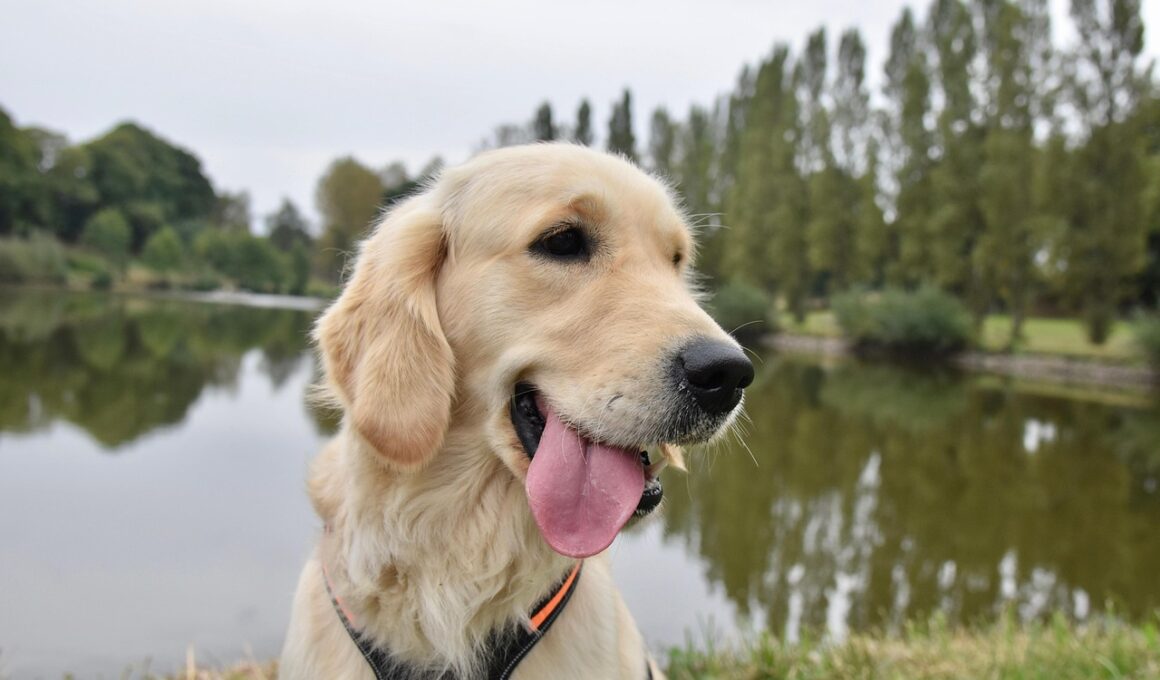Understanding the Judging Criteria in Service Dog Shows
Service dog shows are specialized events where skilled dogs showcase their unique abilities. The judging criteria in these shows typically center around several key factors, which contribute to determining the overall performance of each entry. Understanding these criteria is essential for competitors and spectators alike. Judges assess the dog’s temperament, training, and ability to perform specific tasks. Some of the common tasks include obedience, agility, and even scent detection. Spectators not only witness the impressive abilities of service dogs but also learn how integral they are to many people’s lives. It is rewarding to note how judges emphasize the bond between the dog and handler throughout the event. This relationship plays a vital role, demonstrating the unconditional support that service dogs offer. Attendees can appreciate the meticulous training and dedication required for each participant. These events highlight the importance of proper training for service dogs, enabling them to excel in diverse environments. Ultimately, the criteria mirror the practical purpose of these dogs, furthering public awareness about their role in society. Successful service dog shows elevate the stature of these exceptional canines and their human partners.
One of the critical aspects in evaluating service dogs is their obedience. Judges closely observe the degree to which each dog follows commands and demonstrates discipline throughout the performance. A well-trained dog will display consistent behavior, responding effectively to instructions without hesitation. The evaluation continues with the dog’s agility, which is another significant factor; this assesses how quickly and efficiently the dog can complete various tasks or navigate obstacles. Judges may set up specific courses to test this agility skill, where each dog’s performance is carefully scored. Additionally, interactions between the dog and handler play a key role in the evaluation. The dog’s ability to focus on the handler, maintain eye contact, and respond positively contributes to a successful performance. Spectators might notice the rewarding moments when a dog shows clear understanding through its actions. Finally, judges inspect the overall presentation of the service dog, including grooming and behavior while not in action. This assessment ensures that each dog not only exhibits impressive skills but also embodies the professionalism associated with service animals. The combination of these criteria effectively illustrates the multifaceted role that service dogs play in everyday life.
Evaluation of Communication Skills
Communication skills between service dogs and their handlers are vital for success at shows. Judges particularly appreciate cooperation, which reflects both training and the bond shared between the team. A strong connection enables the dog to intuitively respond to the handler’s commands, showcasing a seamless partnership during performance. Handlers often utilize various cues, both verbal and non-verbal, to communicate tasks. A service dog that exhibits enhanced communication will typically excel in obedience and agility tests. The audience may find it captivating when handlers and dogs synchronize perfectly, engaging in an intuitive dance of commands and responses. Handlers must also project confidence through their commands, as this impacts how effectively the dog performs. Service dogs are trained to be responsive to emotional cues as well, adjusting their behavior to calm their handlers in stressful situations. This adaptability stands as a testament to their intelligence and training. Moreover, judges may evaluate how calmly and confidently a service dog behaves in unfamiliar settings, crucial for public interaction. As a result, communication extends beyond simple commands, encompassing the emotional connection vital to service work and its impact on daily interactions.
Judges also consider the task-specific training that service dogs undergo, which significantly influences their performance in shows. This specialized training is designed to equip them with skills tailored to meet the individual needs of their handlers. Tasks can vary widely dependent upon the specific disabilities of their human partners. For example, some dogs might be trained to assist those with mobility impairments by retrieving items or providing physical stability. Conversely, others may offer emotional support, detecting emotional distress and providing comfort at crucial times. This diversity in training means judges must recognize each dog’s unique abilities when assessing performances. Each entry must not only demonstrate their skills but also highlight how they assist their respective handlers, reinforcing awareness of their invaluable roles in daily life. Additionally, handlers often showcase real-life scenarios during performances, providing them with the chance to illustrate the practical application of each dog’s training. Judges award points based on how authentically the task is performed as well as adherence to the specific requirements laid out for each category. The culmination of task-specific training contributes to a deeper appreciation of the extraordinary capabilities present in working dogs.
Competitor Preparation and Presentation
Before entering the ring, competitors prepare meticulously for service dog shows, honing their skills in social interactions and performances. Preparation is a critical step that combines training, consistent practice, and the emotional well-being of both the handler and the dog. Training sessions often incorporate distractions to simulate real-world environments, ensuring that dogs remain focused amid outside stimuli. Handlers regularly work on their presentation skills, as effective communication with judges and the audience is paramount. Presentations encompass how well they introduce their service dog, convey the training experiences, and demonstrate the dog’s abilities. In addition, attention is given to the dog’s grooming, which can impact overall impressions. A well-groomed service dog reflects the care and respect that handlers hold for their partners. Moreover, handlers can use the presentation moment to share inspiring stories of partnership and resilience, creating emotional connections with the audience. Judges ultimately appreciate the balance between performance quality and the presentation’s significance, determining scores based on various dimensions. These preparations and presentations significantly enhance the competitive edge of each entry while spreading awareness of the vital work service dogs fulfill.
Another crucial aspect of service dog shows revolves around the rules and regulations governing the event. These guidelines serve to ensure fairness and integrity throughout the competition, providing a structured environment for all participants. Competitors must adhere to specific eligibility requirements that vary with each show. Some events may restrict entries to certain breeds or type of services provided, aiming to maintain focused evaluation criteria. Additionally, it is necessary for competitors to present appropriate documentation validating their service dog’s training and certifications. This process is crucial for establishing credibility in service dog roles. Judges familiarize themselves with the rules so they can fairly score each performance based on established standards. Open communication regarding rules helps address any concerns or questions raised by handlers or spectators alike. Additionally, judges play a vital role in enforcing the ethical treatment of all competitors throughout the event. Awareness of such regulations emphasizes a clear commitment to enhancing mutual respect and welfare at service dog shows. As a result, these rules impact not only the outcome of the competition but also the overall experience for handlers, dogs, and the audience.
Conclusion
In conclusion, understanding the judging criteria at service dog shows provides valuable insight into the evaluation process and the training framework behind these remarkable animals. Each service dog epitomizes hard work, dedication, and unique skills developed specifically to assist individuals with disabilities. Judges assess various aspects, including obedience, agility, communication, task-specific skills, and overall presentation of the dog and handler teams. Moreover, the emotional bond between partners plays an essential role in their performance, showcasing the profound relationship nurtured through training and mutual support. Attendees leave service dog shows with a greater appreciation of the significance that service dogs bring to daily lives. These events allow individuals to celebrate the extraordinary capabilities and contributions that service dogs make, elevating public understanding. Furthermore, the regulations governing service dog shows emphasize fairness and ethical treatment, ensuring a positive experience for everyone involved. As awareness continues to grow, it is vital to recognize the importance of this work as more people learn about the various exemplifications of service dogs. Ultimately, these shows inspire both competitors and audiences alike, illustrating the limitless potential of the bond between humans and their service dogs.
This concluding note emphasizes the extraordinary contributions made by service dogs. Everyone present can impart a lasting impression of the skills exhibited by these remarkable animals and their handlers. From special demonstrations to emotional interactions, the public gets to see how meaningful a service animal’s role truly is. With growing awareness and respect for these companions, society benefits from understanding their importance in support networks. Education plays a crucial part in fostering a deeper appreciation of the training, commitment, and love that go into each partnership. As more people recognize the dedication involved, service dog shows serve as more than competitions; they become influential events that contribute to community understanding. It is essential to continue fostering appreciation for service animals and recognizing the invaluable support they provide to their handlers. By promoting ongoing dialogue around service dogs’ work, awareness and support will continue to grow. Consequently, the service dog community will flourish, inspiring further development of training and initiatives to empower these remarkable teams. This establishes a solid foundation for future generations, eventually leading to a society that fully acknowledges the indispensable roles service dogs play. Moving forward, the expectations from the shows will reflect this evolution.


